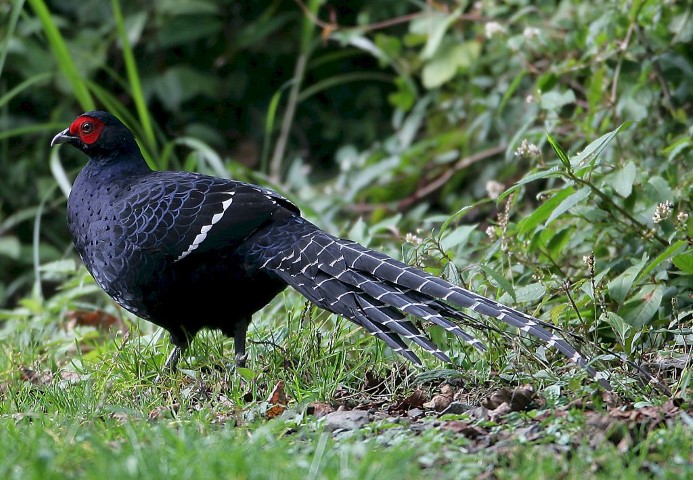 |
| Photo Source: Wikipedia.org |
The Mikado Pheasant (Syrmaticus mikado) is a species of pheasant belonging to the Phasianidae family of gallinaceous birds. It is considered an unofficial national bird of Taiwan, alongside the Swinhoe's pheasant and Taiwan blue magpie. A pair of Mikado pheasants can be seen on the 1000 New Taiwan dollar bill, along with Yushan National Park, one of its known habitats.
The Mikado pheasant is endemic to mountainous regions of Taiwan and inhabits dense shrubs, bamboo growths, grassy areas with conifer overstories, and can be found from 2000 to 3200 meters above sea level.
The male Mikado pheasant is dark in color, with plumage that reflects blue or violet iridescence and white stripes on its wings and tail. The female is brown and speckled with brown and white quills. The male's long and striped tail feathers were once used by Taiwanese aborigines as headdress decorations. The species was named in honor of the Emperor of Japan, during whose occupation Taiwan was.
The Mikado pheasant is a solitary or paired bird that is often quiet and alert. They can tolerate the presence of humans and can often be observed up close, especially in areas where they are used to being fed. They are territorial with a range of 200-400 meters and make soft clucking sounds when feeding and ke, ke, ke calls when fighting for mates or territory. Both sexes may perform a wing-whirring display, and during breeding season the male performs a lateral running display with his body expanded and tail fanned.
The pheasants feed on various fruits, leaves, vegetation, seeds, and invertebrates, often walking and foraging at the same time, similar to chickens, on the forest floor and mountain trails, especially on rainy and foggy days. The breeding season lasts from March to June, and the pheasants build their nests with dead branches, fallen leaves, dry grass, and feathers in tree holes or under rocks. The female usually lays three to eight creamy-colored eggs, and she alone incubates and nurtures the eggs (which take 26-28 days to hatch) and the fledglings once they are born. The young are usually independent by six months at the latest.
